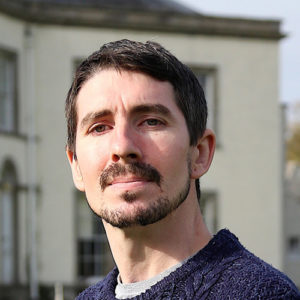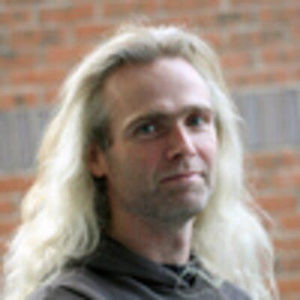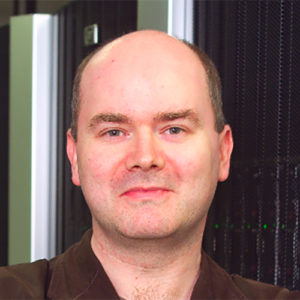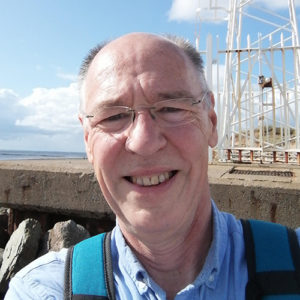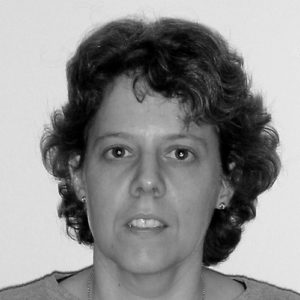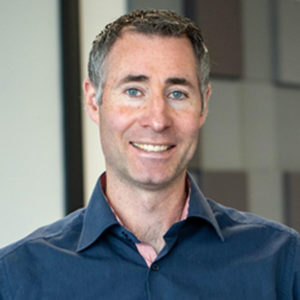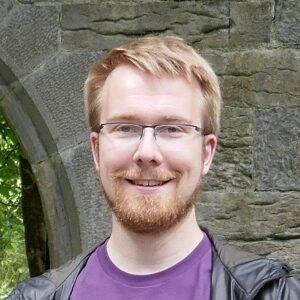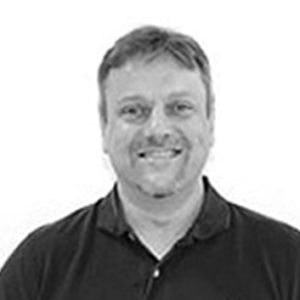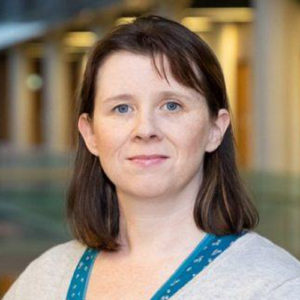MEMBERS
Dr Colm Bracken
Areas of Interest
Exoplanets
Cosmology
Instrumentation
Superconductivity
Electronics
Bio
Colm studied physics with astrophysics at National University of Ireland, Maynooth, graduating in 2010 with 1st class honours. He received his PhD in 2015 from N.U.I. Maynooth for research in electromagnetic analysis and design of far-infrared receivers and detectors for the SAFARI instrument on the SPICA space telescope. Colm lectured at UCD (University College Dublin) from 2016 to 2017, coordinating undergraduate and graduate modules including Galaxies, Cosmology and the ISM; Space Mission Design; Gamma-ray Space Detectors; and Cubesat Subsystems; while continuing research in far-infrared instrumentation and simulation. From 2017 to 2020 he was a postdoctoral researcher at DIAS (Dublin Institute for Advanced Studies), working with Professor Tom Ray on large-format arrays of MKIDs (Microwave Kinetic Inductance Detectors) for optical/near-infrared astronomy. Colm went back to Maynooth University in 2020, where he is now a lecturer in Experimental Physics, and continuing research in superconducting detectors for astronomy, optics, and quasioptics.
Links

Prof. Michael Burton
Areas of Interest
Our Galaxy
Antarctica
Education
Outreach
Planetarium
Bio
Professor Michael Burton is the Director of the Armagh Observatory and Planetarium. This brings together running the oldest continuously active observatory in the UK and Ireland with its longest operating planetarium. It is a job that embraces fundamental research, education, public outreach, history, heritage and culture within a single organisation.
I am an astronomer, with primary research expertise in the formation of stars within the molecular clouds of our Galaxy, and an educator, with 25 years university-level teaching (including Director of Teaching in Physics in a large university), combined together with an active involvement in science communication and outreach.
Links

Dr. Ray Butler
Areas of Interest
Rare or transient phenomena of public interest
Star Clusters
Ultra-Cool & Brown Dwarfs
Light Pollution vs Dark Skies
Telescopes
Detectors and Imaging
Asteroids
(Irish regional coordinator for Asteroid Day)
Bio
Ray Butler is a Lecturer in Physics and Astronomy at NUI Galway, since 2001. Hailing from Cork, he was awarded an Entrance Scholarship to University College Cork (BE [Elec] hons, 1992), and then moved into astronomical research in NUI Galway (PhD [Physics], 1999), followed by two Marie Curie postdoctoral fellowships, at the University of Edinburgh and NUI Galway respectively. He has supervised several MSc and PhD students, and frequently observes with international optical and infrared telescopes. He applies astronomical imaging technologies to the study of globular star clusters, and variable stars including optical pulsars, ultra-cool and brown dwarfs – for which he developed the GUFI high-speed photometer, stationed on the VATT telescope in Arizona. Seeking darker skies for his hobby of deep-sky astrophotography instigated his research into night sky quality. As a former Secretary-Treasurer of the ASGI, he organized the first two Irish National Astronomy Meetings.
Links
Luis Alberto Canizares
Areas of Interest
Solar Physics
General astronomy
Life in the universe
Exoplanets
Bio
Alberto is a PhD student at the Dublin Institute for Advanced Studies and Trinity College Dublin working in Solar Phyiscs under the supervision of Prof. Peter Gallagher and Dr. Eoin Carley. His research involves using data from Parker Solar Probe, LOFAR and Solar Orbiter to study type III radio bursts.
Alberto obtained Bachelor Degrees in Mechanical Engineering and Astrophysics from Trinity College Dublin and Dublin City University respectively and also obtained a Masters Degree at Imperial College London. For a brief period of time, Alberto worked for the mechanical engineering department of Astrium (Airbus Defence and Space) building telecommunication satellites.
Alberto has obtained awards from the Irish Research Council in order to pursue his postgraduate studies, the Naughton Foundation for doing an REU program at the University of Notre Dame publishing his first research note as a result and the Dyson Award in Ireland.
Links
Dr. Alessio Caratti o Garatti
Areas of Interest
Star and planet formation
Interstellar medium
Stellar evolution
European Southern Observatory (ESO)
Space science
Bio
Alessio Caratti o Garatti is a researcher at the Dublin Institute for Advanced Studies and adjunct associate professor at University College Dublin. He is an observational astrophysicist working in star formation, in particular accretion and ejection processes in young stellar objects and their protoplanetary disks. He is involved in the science of the Mid-InfraRed-Instrument (MIRI) on board of the James Webb Space Telescope (JWST).
Links
 Dr. Eoin Carley
Dr. Eoin Carley
Areas of Interest
Bio
Dr Eoin Carley attained his PhD at Trinity College Dublin in 2014, with a primary research focus on eruptions, shockwaves, and particle acceleration in the solar atmosphere. In the same year he was awarded a prestigious Irish Research Council ELEVATE fellowship, co-funded by Marie-Curie Actions, allowing him to take up a postdoctoral position at the Laboratoire d’Études Spatiales et d’Instrumentation en Astrophysique (LESIA) at the Paris Observatory from 2014 – 2016. While at LESIA he worked on the radio signatures of particle acceleration in the solar atmosphere using the Nançay Radioheliograph and Nançay Decametric Array, located in central France. In 2019, Eoin was awarded the Schrödinger Fellowship to undertake 5 years of research in the Astronomy & Astrophysics Section of the Dublin Institute for Advanced Studies. The current focus of his research is in using the Irish Low Frequency Array (LOFAR) and the International LOFAR telescope to observe eruptions, shockwaves and intense bursts of plasma emission in the solar atmosphere.
Links

Dr. Masha Chernyakova
Areas of Interest
High Energy Astrophysics
Multi-wavelength Astronomy
Cherenkov Telescope Array (CTA)
Gamma-ray Binaries
Galactic Centre
Bio
Masha Chernyakova got her Bachelor and Master degrees at the Moscow Institute of Physics and Technique and was awarded a Ph.D. in Physics from Lebedev Physical Institute in Moscow. After postdoctoral work at Integral Science Data Center, Switzerland and at the Dublin Institute for Advanced Studies, she took up an academic position in the School of Physical Sciences at Dublin City University. She currently holds the position of Associate Professor and is a chair of the physics with astronomy (PHA) Programme Board. Her main scientific interests lie in the area of high energy astrophysics. In her work she combines a theoretical approach of the modelling of sources with the analysis of experimental data. During her career she has organized a number of multiwavelength observational campaigns, including radio, optical, X-ray and VHE. She is an Irish representative at Cherenkov Telescope Array (CTA) consortium and is actively working on CTA development.
Links

Prof. Peter Coles
Areas of Interest
Cosmology
Large-scale structure of the Universe
Galaxy clustering
Cosmic Microwave Background
Open Access Publishing
Bio
I am a theoretical astrophysicist and Head of the Department of Theoretical Physics at Maynooth University. My research is in the area of cosmology and the large-scale structure of the Universe, specifically on theoretical models that try to account for the properties of the observable universe, including the cosmic microwave background and galaxy clustering. I also research cosmological models that feature magnetic fields, Non-Gaussianity and asymmetries, as well as models based on theories of gravity other than Einstein’s General Theory of Relativity.
Links

Dr. Oisín Creaner
Areas of Interest
Big Data
Exoplanets
Radio Astronomy
Dark Matter
MKIDs
Astronomical Outreach
Bio
Dr. Oisín Creaner is a graduate of Trinity College Dublin and Technological University Dublin. He spent several years as a Lecturer in Computing and Physics at TU Dublin and NCI, before taking up a series of postdoctoral research posts in the Dublin Institute for Advanced Studies and at Lawrence Berkeley National Laboratory. For many years, he was the presenter of Astronomy Ireland’s evening classes on Astronomy for Beginners. He is currently a Postdoctoral Research Fellow at DIAS.
His specialisation is in the application of High-Performance Computing techniques to the analysis of large astronomical and cosmological datasets. His current research concentrates on improving the usability of MKIDs readout systems: a new type of camera suitable for multi-wavelength astronomical observations.
He is currently the joint ASI communications officer and Early Career Researcher representative. He is a member of the International Astronomical Union’s National Astronomy Education Coordinator team for Ireland. He is a member of the Institute of Physics’ Computational Physics Group Committee.
Links
Prof.Turlough Downes
Areas of Interest
Star Formation
Planet Formation
Bio
Turlough Downes is a Professor of mathematics and astrophysics at DCU. His research is primarily focused on understanding how stars and planets form, and how astrophysical plasma turbulence can affect these processes. He is an expert in computational astrophysics and the associated high performance computing. He is founding Director of the Centre for Astrophysics & Relativity at DCU, and former Director of SCI-SYM, the computational science research centre at DCU. He was also founding Chair of the PRACE User Forum (PRACE is the EU Research Infrastructure for high performance computing).
Links
Prof. Gerry Doyle
Areas of Interest
solar physics
cool stars
Bio
Links
Prof. Alan Fitzsimmons
Areas of Interest
Comets
Asteroids
Near-Earth Objects
Asteroid impacts
Interstellar Objects
Bio
Alan Fitzsimmons is a Professor of Astronomy in the Astrophysics Research Centre at Queen’s University Belfast, UK. He mostly studies comets and asteroids orbiting our Sun, using telescopes including the Very Large Telescope and the Hubble Space Telescope. He has published over 140 scientific papers, and talked about his work in print, on radio and television. Highlights of his career include explaining effects on Jupiter caused by the collision of comet Shoemaker-Levy 9 in 1994, observing asteroid 2008 TC3 before its collision with Earth, and studying the first known Interstellar Objects. Currently he is an active member of the Asteroid Terrestrial-impact Last Alert System (ATLAS) and the ESA Hera planetary defense mission.
Links
Dr. Morgan Fraser
Areas of Interest
Supernovae
Gravitational waves Massive stars
Multi-messenger astronomy
Bio
Morgan Fraser is a Royal Society – Science Foundation Ireland University Research Fellow at University College Dublin. His group aims to understand the ultimate fate of the most massive stars as core-collapse supernovae, and find new classes of extragalactic transients. Along with this, he has a leading role in the search for the counterparts of gravitational waves through the ENGRAVE collaboration.
Links
Dr. Rebeca Garcia Lopez
Areas of Interest
Star formation
Planet formation
ESO
Prof. Peter Gallagher
Areas of Interest
Solar Physics,
Space Weather,
Ground & space-based instrumentation
Bio
I am Head of Astrophysics at the Dublin Institute for Advanced Studies and an Adjunct Professor at Trinity College Dublin. My reseach is primarly concerned with understanding the fundamental physics of solar storms and their impacts on Earth. I have a long association with ESA and NASA and lead the Irish LOFAR radio telescope project.
I received a BSc (HONS) in physics and mathematics from University College Dublin in 1995, followed by an MSc (Distinction) in optoelectronics and image processing and a PhD in solar physics from Queen’s University Belfast. I then spent six great years in the US, firstly as a Postdoctoral Research Fellow at Owens Valley Solar Array and Big Bear Solar Observatory in California and then as a Scientist and Senior Scientist at NASA Goddard Space Flight Center. Before joining DIAS in 2018, I spent 13 years running a Solar Physics & Space Weather Research Group at Trinity College Dublin.
I was particularly happy to have served on ESA’s Solar System Working Group, which was responsible for ESA space science mission evaluation for 2015-2025, and most recently on ESA’s Space Science Advisory Committee (2017-2019).
Links
Prof. Neale Gibson
Areas of Interest
Exoplanets,
Exoplanet Atmospheres,
Observational astronomy,
Statistics & Machine Learning
Bio
Prof. Neale Gibson is an astrophysicist at Trinity College Dublin, and a Royal Society/Science Foundation Ireland University Research Fellow. His research focuses on the discovery and characterisation of extra-solar planets, i.e. planets that orbit stars other than our Sun, in particular focussing on observational and statistical methods for studying exoplanet atmospheres. He was previously a research fellow and fellow support astronomer at the European Southern Observatory, and before that a postdoctoral research assistant at the University of Oxford. Prior to that he did his undergraduate degree and PhD at Queen’s University Belfast.
Links
Dr. Aaron Golden
Areas of Interest
Magnetospheres/Aurora (substellar, stellar and post-stellar)
Brown Dwarfs & Ultracool substellar objects
Pulsars and pulsar nebula
High speed radio and optical astronomy
Astronomical Data Sciences
Bio
I’m a Lecturer in the School of Maths, NUI Galway, a member of the University’s Centre for Astronomy, and Visiting Associate at the Armagh Observatory and Planetarium. I trained as a physicist (B.A. from Trinity College Dublin, M.Sc. from Queens University Belfast) and completed a Ph.D. in Astrophysics in 1999 on pulsars at NUI Galway. I have always been very much an interdisciplinary researcher, working in areas as diverse from genomics to earth observation science, but nearly all of my work is inspired by my on-going astronomical research, which is really what I love to do best. I started using radio telescopes almost as soon as I finished my Ph.D., and came back home to Ireland just in time to use our very own national radio telescope facility, I-LOFAR located on the grounds of Birr Castle in County Offaly.
Links
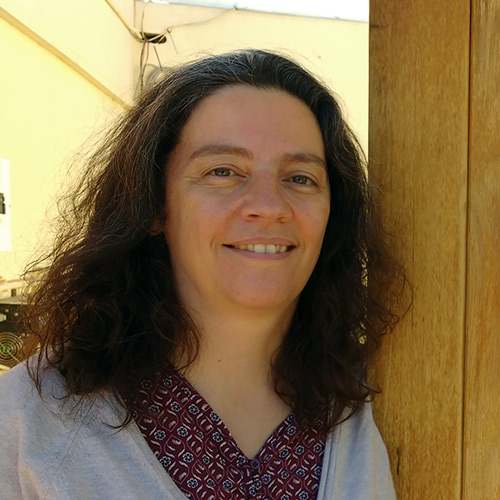
Prof. Lorraine Hanlon
Areas of Interest
Watcher Telescope
EIRSAT-1
Bio
LORRAINE HANLON is Full Professor of Astronomy in the School of Physics at University College Dublin (UCD) and Director of UCD’s interdisciplinary Centre for Space Research (C-SPACE). She did her undergraduate and graduate degrees in Experimental Physics and was a research fellow at the European Space and Technology Research Centre in the Netherlands. Her main research interests are gamma-ray bursts, multi-messenger astronomy, robotic telescopes, and space instrumentation.
Lorraine is Chair of ESA’s Astronomy Working Group, a trustee of the Royal Astronomical Society, and programme director of UCD’s MSc in Space Science and Technology. She is the Endorsing Professor for EIRSAT-1, Ireland’s first satellite, a CubeSat being developed through ESA’s ‘Fly Your Satellite!’ programme, and is Principal Investigator of the Watcher robotic telescope in South Africa.
Links
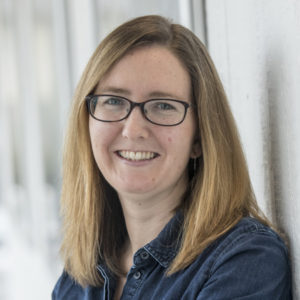
Prof. Caitriona Jackman
Areas of Interest
Solar system
Planets
Space Weather
Magnetospheres
Bio
Prof. Jackman is a Science Foundation Ireland Principal Research Fellow and Senior Professor of Space Physics at the Dublin Institute for Advanced Studies. At the heart of her research is Space Plasma Physics in our solar system and beyond. She is an expert in planetary magnetospheres, the magnetic bubbles which surround magnetised planets. She has worked with data from missions including NASA’s Cassini at Saturn, ESA’s Cluster mission in orbit around Earth, NASA’s Juno at Jupiter, and with data from the Hubble Space Telescope, and the Chandra X-ray Observatory. Her research interests include understanding how the aurora works, and how machine learning and complexity science can be used to study huge volumes of data from space.
Links
Prof. C. Simon Jeffery
Areas of Interest
Pulsating Stars
Evolved Stars (including hot subdwarfs and extreme helium stars)
Stellar Atmospheres
Stellar Physics
Double White Dwarf Mergers
Bio
Born in Newcastle and raised in Edinburgh, Simon studied Physics at Imperial College, London, and Astrophysics at St Andrews, Scotland. After postdoc fellowships in St Andrews and Kiel, Germany, he was appointed to a research astronomer position at the Armagh Observatory and Planetarium in1996. He is also adjunct Professor of Physics at Trinity College Dublin. Simon has held a lifelong interest in how stars work and how they vary over time. His PhD in the theory of stellar structure and evolution was followed by observational and theoretical work on stellar pulsations and atmospheres. Most stars retain a hydrogen surface to the very end. However, in rare and extreme cases, some stars become true ‘helium’ stars with surfaces partly or completely depleted in hydrogen. Simon’s goal is to explore the physics of their outer layers and to demonstrate their elusive origins. A surprising conclusion is that the majority appear to have formed from the merger of two very old and faint stars … a double white dwarf. His favourite is V652 Herculis — the pulsating ‘born-again rocket star’.
Links
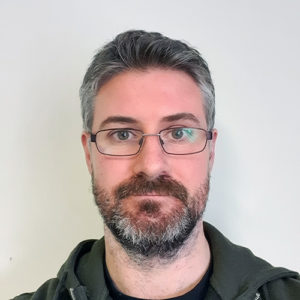
Dr. Patrick Kavanagh
Areas of Interest
X-ray astronomy
Supernova remnants, superbubbles, hot interstellar medium
James Webb Space Telescope
Bio
Dr. Kavanagh is a software developer and postdoctoral researcher at the Dublin Institute for Advanced Studies. He studied in both Dublin Institute of Technology and Dublin City University. He worked for several years at the Institute for Astronomy and Astrophysics Tübingen in Germany on high-energy studies of supernova remnants, superbubbles, and the hot interstellar medium. He returned to Dublin in 2016 and now works on the calibration/software team for the Mid-Infrared Instrument on the James Webb Space Telescope, as well as continuing his research.
Links
 Dr. Mark Kennedy
Dr. Mark Kennedy
Areas of Interest
X-ray astronomy,
Optical Astronomy,
Interacting binaries,
Irradiated pulsar binaries,
Stellar black holes,
Machine Learning
Bio
Mark Kennedy is a Government of Ireland Postdoctoral Fellow at University College Cork. He is interested in studying the end points of stellar evolution (black holes, neutron stars, and white dwarfs) as they interact with regular stars in interacting binaries. His current work focuses on combining the large data sets being produced by wide-field optical surveys such as ZTF and GOTO with databases from other missions such as GAIA and eRosita to look for the missing population of stellar sized black holes which are predicted to reside in our Galaxy.
Links

Dr. Peter Keys
Areas of Interest
Solar Physics
Ground-based solar observations
Small-scale magnetic fields on the Sun
Bio
Peter Keys is a lecturer at Queen’s University Belfast. His research is in the field of solar physics and he specialises in ground-based observations of small-scale magnetic fields in the solar atmosphere. His work aims to understand the evolution of magnetic fields over time and how these small-scale features transfer energy between regions in the solar atmosphere.
Links
Dr. Jonathan Mackey
Areas of Interest
Massive Stars
Supernovae
Simulation
High-Energy Astrophysics
Meteors
Bio
Jonathan Mackey leads a research group investigating Massive Stars and High-Energy Astrophysics at the Dublin Institute for Advanced Studies. He uses computer simulations in comparison with observations, to gain understanding of massive stars, their nebulae, and supernova remnants. He develops and maintains a computational fluid dynamics code, PION, and is a member of the H.E.S.S. collaboration. He is actively involved in education and public engagements projects at DIAS Dunsink Observatory.
Links
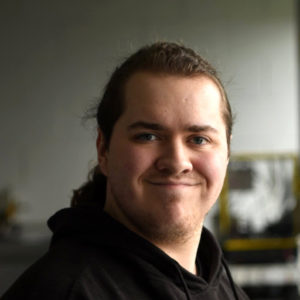 Samuel Mckeague
Samuel Mckeague
Areas of Interest
High Energy Astrophysics
X-ray binaries
gamma-ray binaries
Athena Telescope
CTA
Cosmology
Bio
BSc in Physics with Astronomy from Dublin City University (graduated 2017, received the Fryar’s medal for my final year research project)
Current Research: Modelling and simulating high energy emission from High Mass X-ray Binaries including Fermi analysis of gamma-ray binaries, observation simulations of eclipsing binary Vela X-1 for the Athena XIFU and simulation of transient sources such as SS433 with the Cherenkov Telescope Array (CTA).
Links
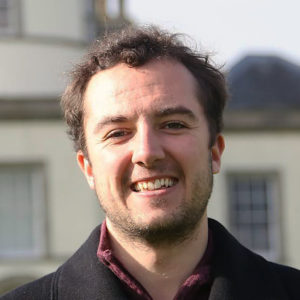 Pearse Murphy
Pearse Murphy
Areas of Interest
Solar Physics
Space Weather
Solar Radio Bursts
Bio
I am a PhD student in Trinity College Dublin and the Dublin Institute for Advanced Studies (DIAS) under the co-supervision of Prof. Peter Gallagher and Dr. Eoin Carley. My research focuses on interferometric radio imaging of solar bursts using the LOw Frequency ARray (LOFAR).
I am also involved in the development of the REALtime Transient Acquisition (REALTA) cluster for recording and processing data from the Irish LOFAR station I-LOFAR in Birr, Co. Offaly. I am one of I-LOFAR’s Chief Observers and regularly monitor the sun for radio signatures of solar activity.
Links
Dr. Sophie Murray
Areas of Interest
space weather
solar physics
science communication
Bio
Sophie is a Research Fellow at Trinity College Dublin and Dublin Institute for Advanced Studies. She is a space weather scientist, studying solar eruptions from the Sun and how they impact the Earth. Sophie is also involved in public engagement and outreach at Dunsink Observatory, as well as leading the Astronomical Midlands project to engage rural communities with astronomy.
Links
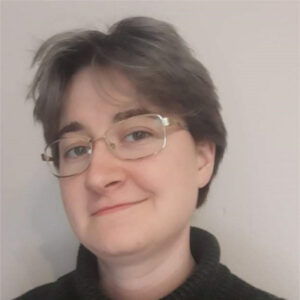 Hannah O’Brennan
Hannah O’Brennan
Areas of Interest
Bio
I am a PhD student at Maynooth University and I model gravitational waves emitted by early Universe sources under the supervision of Dr. John Regan.
These gravitational waves are emitted by the mergers of intermediate-mass black hole binaries at z > 7, thus putting them in the LISA band of detection.
I received my Bachelors degree in Theoretical Physics from Trinity College Dublin and my MSc in Theoretical Physics from the University of Edinburgh.
Links
Dr. Créidhe O’Sullivan
Areas of Interest
Cosmic microwave background
Astronomical instrumentation
Bio
Créidhe O’Sullivan is Senior lecturer in the Department of Experimental Physics, National University of Ireland Maynooth where she carries out research on astronomical instrumentaton operating at far-infrared wavelengths, and in particular on telescopes designed to image very faint temperature and polarisation features in the cosmic microwave background radiation (e.g. a current ground-based project QUBIC). She has a degree in Experimental Physics from University College Dublin and a PhD in Physics from Cambridge University.
Links
Dr. Simon Purser
Areas of Interest
Ionised Jets
Radio astronomy
Star formation
Giant Molecular Clouds
Bio
Using radio observations of young stellar objects (YSOs), I examine the properties of ionised, collimated ejection-phenomena (jets) launched (with speeds of several 100s of km/s) as by-products of the star formation process. These jets are intrinsically tied to accretion (accumulation of matter by forming stars) and as such are an indirect method of studying the star formation paradigm. Both low (< 8 solar masses) and high mass YSOs are included in my research and a key question I am looking to answer is if both mass regimes form in similar ways. Currently I am part of the Ejection Accretion Structures around YSOs (EASY) project at the Dublin Institute for Advanced Studies and will be using the highest resolution radio observations possible to examine the physical processes of launching/collimation near the launching point of the jets.
Links
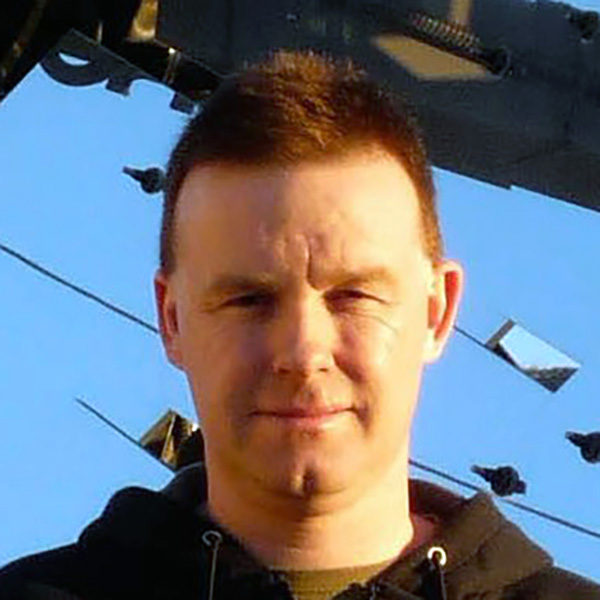 Associate Prof. John Quinn
Associate Prof. John Quinn
Areas of Interest
Bio
Links
Prof. Tom Ray
Areas of Interest
Star and Planet Formation
High Energy Astrophysics
European Southern Observatory
LOFAR
Ancient Astronomical Sites
(Archaeo-astronomy)
Bio
Tom Ray is Professor of Astrophysics at the Dublin Institute for Advanced Studies. He began his career in Radio Astronomy at Jodrell Bank before working at the University of Sussex and the Max Planck Institute for Astronomy in Heidelberg. His main area of interest is star and planet formation and, in particular, the supersonic jets that stars like our sun produce when less than a million years old. Tom is Co-Principal Investigator of the Mid-Infrared Instrument on the James Webb Space Telescope (JWST). JWST, which is due for launch in 2021, will be the largest telescope ever placed in space. He is Co-Principal Investigator on ARIEL, a mission selected by ESA, to explore exoplanet atmospheres and also leads a group developing Microwave Kinetic Inductance Detectors (MKIDs) for use in Astronomy. He is an ERC Advanced Grant Laureate and his other interests include ancient astronomical sites, like Newgrange, and Historical Astronomy.
Links
Dr. Matt Redman
Areas of Interest
Star Formation
Star Destruction Processes
Bio
Matt Redman is Director of the Centre for Astronomy NUI Galway, and leads a group with research interests in star formation and star destruction processes. He uses radio and millimetre telescope data to investigate the collapse of star forming molecular clouds, and optical and millimetre data for studying the shaping mechanisms of planetary nebulae, novae and supernova remnants. He works at the observational and theory interface, simulating data from telescopes using radiative transfer, photoionisation and spatiokinematic codes.
Links
Dr. John Regan
Areas of Interest
Black Holes
Cosmology
First Stars
Quasars
CMB
Jeremy Rigney
Areas of Interest
Stellar Physics
Radio Astronomy
Bio
Links
Dr Donna Rodgers-Lee
Areas of Interest
Bio
Links
Dr. Andreas Sander
Areas of Interest
PoWR
Massive Stars
Evolved Stars
High Mass X-ray Binaries
Stellar Atmospheres
Stellar Winds and Feedback
Spectroscopy
Gravitational Waves
Bio
I am a post-doctoral researcher and appointed Öpik Fellow at Armagh Observatory and Planetarium (AOP) with scientific expertise in stellar atmospheres, in particular for hot and massive stars. During my PhD at the University of Potsdam in Germany, I discovered my passion for Wolf-Rayet and other evolved stars.
I am an active developer of PoWR, a leading code in simulating the complex atmospheres of hot stars with radiatively driven winds. Located at the conjunction of theory and observations, I use my atmosphere models to quantify the physical properties of massive stars and their winds. This includes the analysis of observations from modern, large-scale telescopes as well as providing predictions for mass-loss rates, stellar spectra and feedback, crucial ingredients to better understand stellar populations and the origin of massive black holes and gravitational waves.
Links
Dr Stephen Scully
Areas of Interest
THz
Quasi-optics
CMB
E-modes
B-modes
Gaussian Beam Modes
Cosmology
Bio
Dr Scully graduated with a BSc. in Electrical/Electronic Engineering from Trinity University in 1996. Over a 15-year career Dr Scully completed numerous projects in highly regulated pharmaceutical and medical device industries before returning to University in 2010. He completed a Higher Diploma in Physics in 2011 and on the back of his results was awarded 2 scholarships, the John Hume Scholarship and a Doctoral Teaching Fellowship. Accepting the latter, he completed a Ph.D. in Quasi-Optical Design and Analysis of a Bolometric Interferometer for CMB Experiments at Maynooth University in 2015. He continued working as a post-doctoral researcher and in 2017 was offered a lectureship at the Institute of Technology Carlow. He is currently employed as a Lecturer in the department of Aerospace, Mechanical and Electronics Engineering within the School of Engineering at IT Carlow. He is a member of the IT Carlow Engineering Centre of Research and Enterprise (engCORE).
Links
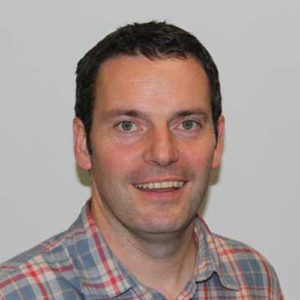
Dr. Neil Trappe
Areas of Interest
Telescopes & receivers
Radio astronomy
Cosmology
Bio
Neil Trappe works in the Experimental Physics Department at Maynooth University. His research interests are in the field of far-infrared space instrumentation. He has worked on the HIFI instrument for the European Space Agency’s Herschel Space Observatory (ESA PRODEX funded), Band 5 & 9 optical design for ALMA (SFI Research Frontiers funded) and currently is working on and managing a number of Technical Research Projects for the European Space Agency. This work is developing efficient analysis techniques, instrument design, and focal plane pixel architectures for future Cosmic Microwave Background space missions. He also recently obtained an SFI Infrastructure Award to establish a THz frequency measurement system.
Links
Prof Aline Vidotto
Areas of Interest
Star-planet interactions
Numerical simulations
Stellar winds
Exoplanets
Bio
Aline Vidotto is an academic at Trinity College Dublin. She studies the interaction of exoplanets with their host star’s wind, and how this interaction can affect exoplanets (for example, generating auroral emission, inducing atmospheric evaporation and possible links to planetary habitability). For that, she develops 3D simulations of winds of Sun-like stars, that permeate entire exoplanetary systems. Her realistic account of stellar winds has supplied more detailed diagnostics of the wind interaction with exoplanets, guiding observers towards the most promising systems to host detectable signatures of such interactions.
Links
Dr. Emma Whelan
Areas of Interest
Star formation
Planet formation
Exoplanets
Telescopes
Observational astronomy
Spectroscopy
Women in Physics
Bio
Emma Whelan is a lecturer in the Department of Experimental Physics Maynooth University and her field of study is star and planet formation. She graduated from Trinity College Dublin in 2001 with a BA in Physics with Astrophysics. From 2001 to 2005 she studied at the Dublin Institute for Advanced studies for a PhD in observational astronomy and graduated with a PhD in 2005. She continued her work in this area at the Dublin Institute of Advanced Studies as part of the Marie Curie Research and Training Network JETSET from 2005 to 2009. In 2009 she was awarded a Marie Curie Fellowship at the Institut de Planétologie et d’Astrophysique de Grenoble and studied there until 2011. In 2012 she moved to the Institut für Astronomie und Astrophysik Tübingen. In 2016 she was appointed as a lecturer in the Experimental Physics Department


